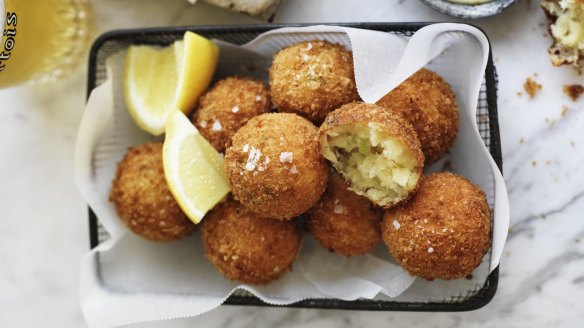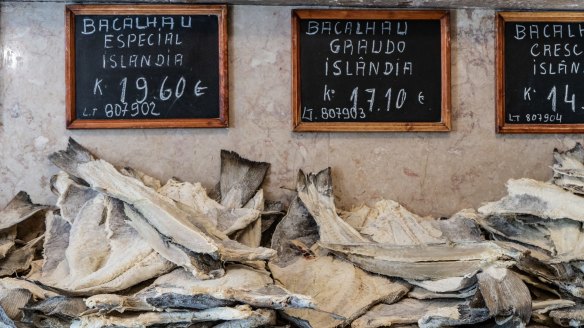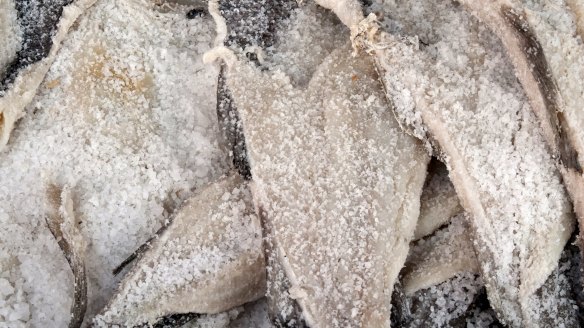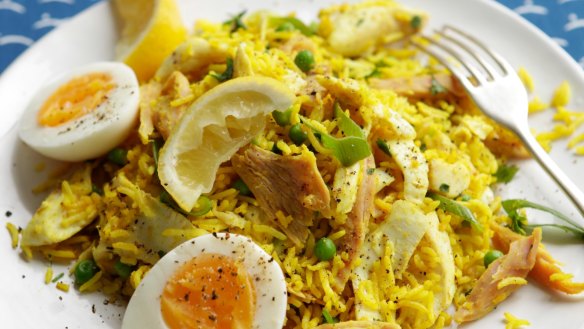Salt cod: Everything you need to know

It's an ingredient with a colourful culinary and social history involving Vikings and slave traders, seafarers and explorers. And it undergoes one of the most remarkable transformations in European cuisine: from flat, hard, dried fish to tender, sweet flakes of white flesh – just add water.
What is it?

Salt cod is known as bakalarou in Greece, bacalao in Spanish and baccala in Italian. The name comes from the Latin baculum, meaning staff or stick, referring to the pieces of wood on which split cod were dried.
Preserving cod has been an industry in the Atlantic since the Vikings developed keeled boats that traversed the seas more than a thousand years ago.
This allowed them to haul in these large fat fish, some weighing up to 40kg. Gutted, split, salted and dried, the flesh could last for years without spoiling.
Salt cod became an important business across Europe, where the church demanded followers respect meat-free fast days.
Across the Atlantic, salt cod became the protein source that fuelled the slave trade in the Americas. Salt cod went one way and slave-grown sugar filled the ships on their return voyage.

Why do we love it?
For many Europeans, Filipinos and Caribbeans, salt cod is a food from the family kitchen that evokes strong memories.
Salt cod melds with so many ingredients, from potato or rice to tomato sauce, and its salty tang makes it an ideal food to accompany a cold beer, vermouth or white wine.
The drying process removes a lot of the fish flavour and smell and concentrates its umami character.
When cooked, the liquid it releases adds gelatinous protein to the dish, creating a lip-smacking texture on the lips and a slightly thickening effect on sauces cod is cooked with.

How do you use it?
Before cooking, salt cod needs soaking in fresh water for up to 48 hours, depending on its thickness.
Prepare by rinsing off the surface salt, then soaking it in an airtight non-reactive container in the fridge for 12-24 hours, changing the water every few hours.
- If making classic salt cod fritters, use boneless cuts. Dip bite-size pieces in flour and egg wash, then batter and fry until golden brown. Season with salt and serve hot.
- To make bacalao croquettes like those at Parlar in Potts Point, prepare the salt cod then simmer in milk, making a thick bechamel sauce with the milk and flaking the cod into the sauce. Cool, form into croquettes, crumb and deep-fry.
- The Basques stew salt cod with red capsicum and onions to make bacalao a la Vizcaina.
During COVID, Melbourne restaurateur Caterina Borsato, from Caterina's Cucina e Bar, channeled her Venetian roots, producing a silky smooth spread called bacala mantecato, which she now sells in jars. Made from salt cod whipped with olive oil and garlic, it is as luscious as it is moreish.
Where do you get it?
Head to European grocers, delis and markets. You pay more for thicker pieces with less skin and bone.
Use lesser cuts if you're going to flake the flesh and thicker cuts if you are stewing or frying single pieces.
It should be firm, hard and creamy white in colour, its surface shining with salt crystals and smelling pleasantly like an old wharf.
Bacala mantecato is available from Caterina's Cucina online at caterinas.com.au.
Send your culinary conundrums and ingredient suggestions to brainfood@richardcornish.com.au or Twitter and Insta @foodcornish
Appears in these collections
- More:
- Food
- Brain food
